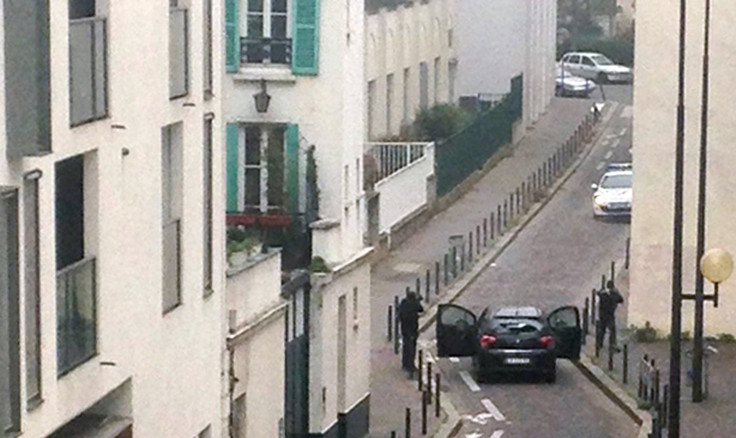Charlie Hebdo Paris Massacre Work of 'Highly Trained And Skilled' Attackers

Experts said the use of Kalashnikov assault rifles and pump-action shotguns in the shooting at satirical magazine Charlie Hebdo in Paris, and the ease with which the attackers were able to flee the scene, suggest a high level of training and meticulous planning.
“There were multiple attackers involved and they seem to be quite professional, unfortunately,” said Max Abrahms, a terrorism expert at Northeastern University. “Even though Cherlie Hebdo is a soft target, it’s not that soft. It has a police presence, there was a code at the building, and members of the publication were vigilant because they knew they were under threat, yet the assailants seem to have had no problem going in there, killing [staff and police], and then successfully fleeing the scene.”
As the attackers escaped the scene, one of the men was heard shouting "we have avenged the Prophet Muhammad," which suggests they may be part of an Islamic militia group bent on punishing the weekly magazine for satirizing Islam in cartoons.
“These seem to have been Islamist perpetrators who are highly trained and skilled," Abrahms said. "The dispersion of the bullets was very accurate, suggesting they were a good shot.”
The gunmen entered the Charlie Hebdo office in central Paris at around 10:45 a.m. Central European Time. Among those they killed were three of the magazine’s well-known cartoonists and its editor-in-chief, Stephane Charbonnier. A motivation behind the attack is thought to be a highly controversial edition of the magazine that poked fun at Shariah law. The old offices of Charlie Hebdo were firebombed not long after the issue was published in November 2011.
The gunmen are still at large, and Abrahms believes there may be more attacks to come. “I’m worried with the sophistication of this early plan that it could develop in a similar fashion,” he said. “If you look at the Norwegian attacker [Anders] Breivik and the Mumbai attackers, for example, they all had multiple scenarios planned, so this may not be a one-off attack.”
Early CNN reports indicate one of the gunmen may have been carrying a rocket-propelled grenade launcher, adding more credence to the theory that the attackers were highly prepared and well equipped.
The gunmen “carried out the operation in a very calm, controlled way,” Richard Clarke, a former White House counterterrorism adviser, said in an ABC interview. “They were people who did not look like they were wild, on some kind of spree, but who were accomplishing a military operation,” he said. “They are moving quickly and appear to be physically fit. This doesn’t equal a group of rogue, angry guys."
Video footage of the attackers' escape shows a sneaker fall from the passenger door of the car, suggesting the attackers changed clothes. The Guardian in London said it is believed the attackers may have planned to escape via Paris' underground Metro system.
While Abrahms said there is so far little evidence identifying the gunmen, he said the attack could well be the work of returning Islamic State group fighters, perhaps one of the first major attacks that have been emphatically urged by Abu Bakr al-Baghdadi, the leader of the Islamic State: “The biggest fear, as we all know, is that Westerners will link up with jihadist groups like IS in Syria and then return home radicalized with enhanced tactical skill.”
France has experienced other attacks recently: Cars were driven into crowds of shoppers in two cities, Dijon and Nantes, and police were attacked by a man wielding a knife in Tours. All were said to be in the name of the Islamic State.
© Copyright IBTimes 2024. All rights reserved.






















